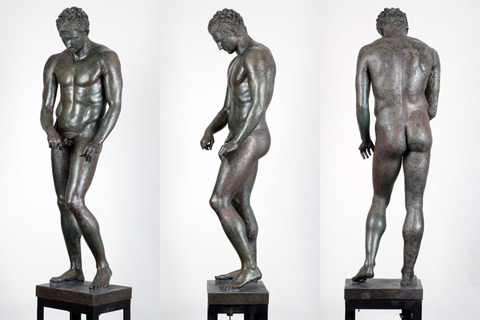Zagreb, Klovićevi dvori Gallery, October 2010 – February 2011
Ljubljana, City Museum of Ljubljana, March – May 2011
An exhibition organized by the Klovićevi Dvori Gallery covered the period from the 12th to the 1st century BC – from earliest Greek visits to our coast in the Mycenaean period until the arrival of Romans. With over 480 exhibition pieces of sculpture, numismatics, ceramics, jewelry, weapons, military equipment, navigation and religious artifacts, this exhibition brought together for the first time the most beautiful and most important exhibits from seventeen museums in Croatia, ten other institutions and seven private collections, from Istria to Dubrovnik, including the islands of Hvar, Korčula and Vis, and continental Croatia from Zagreb to Čakovec and Osijek. One of the exhibition highlights was the Croatian Apoxyomenos.

Ancient Greeks in Croatia was shown in Ljubljana featuring a documentary exhibition of the Apoxyomenos statue, organized by the Croatian Conservation Institute. The exhibition recounted the story of how the statue was found and raised from the sea, of underwater archaeological research on the site, conservation-restoration work and research, botanical material found inside the statue and the casting technique, and placed the statue in the context of how it came into existence.
Croatian Conservation Institute carried out the Croatian Apoxyomenos project with broad-branched cooperation and through the support of the Ministry of Culture of the Republic of Croatia. It was acknowledged as a significant contribution by a joint jury of the European Commission and Europa Nostra. Among 158 project applications from 32 countries, the Croatian Apoxyomenos project was awarded the European Union Prize for Cultural Heritage and Europa Nostra in the category “Conservation of Works of Art”. The Croatian award for special achievement in the field of cultural heritage protection – “Vicko Andrić” for 2006 was awarded to the project coordinator Miljenko Domijan, chief conservator of the Ministry of Culture, conservators-restorers Giuliano Tordi and Antonio Šerbetić and conservator art historian Iskra Karniš Vidovič.

